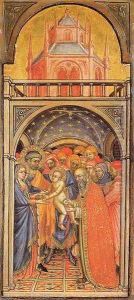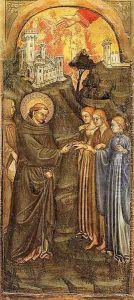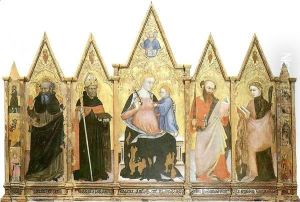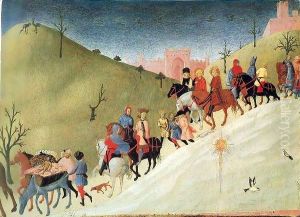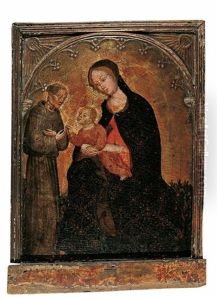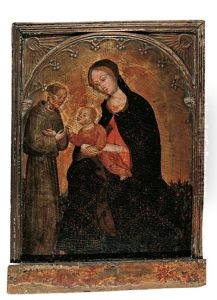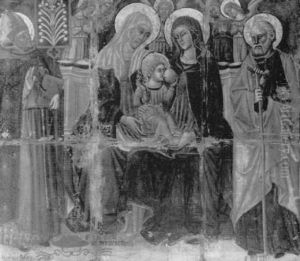Ottaviano Nelli Paintings
Ottaviano Nelli was an Italian painter of the early-Renaissance period, active mainly in his hometown of Gubbio and nearby Urbino, in the region of Umbria. He was born into a family of painters in 1375, and his father, Mello, was also a painter, from whom he likely received his initial training. Nelli is often associated with the Gothic style, which was prevalent before the full bloom of the Renaissance. His work, however, does show signs of the transition to the new artistic ideas and techniques that were emerging in Italy during his lifetime.
Nelli's art is characterized by its vivid coloration and the use of gold leaf, typical of the International Gothic style. He was also known for his frescoes, which often featured religious themes, reflecting the deep spirituality of the period. One of his most notable works is the fresco cycle in the Oratory of St. John the Baptist in Urbino, which includes scenes from the life of the saint. These frescoes are significant for their narrative clarity and the emotional expressions of the figures, which hint at the evolving humanist approach to art that would define the Renaissance.
Despite his considerable local influence, Nelli did not gain the same level of fame as some of his contemporaries, such as Fra Angelico or Ghiberti, whose works were more in line with the emerging Renaissance aesthetics. Nonetheless, Nelli's contributions to the art of central Italy during the early 15th century are significant, and his works provide a valuable glimpse into the transitional period between the Gothic and Renaissance styles. Ottaviano Nelli died in 1444, leaving behind a legacy that is still appreciated by art historians and enthusiasts of the Gothic and early Renaissance periods.
